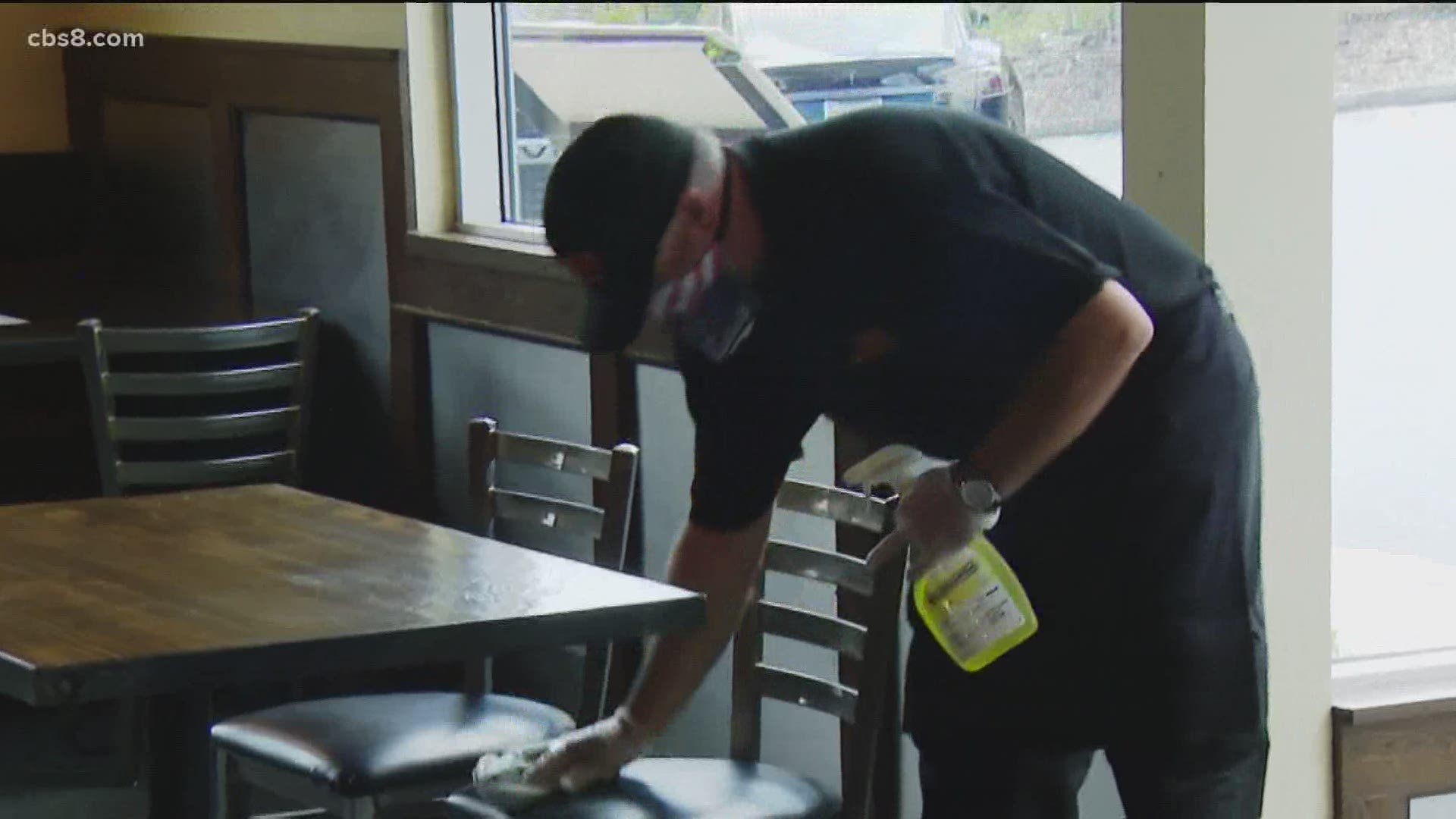SAN DIEGO COUNTY, Calif. — Starting Monday, businesses including movie theaters, gyms, museums and hair and nail salons can resume indoor operations, with modifications, under newly issued state guidance related to the coronavirus pandemic.
Restaurants, places of worship and movie theaters can reopen indoor operations Monday, but are only allowed up to 25% occupancy or 100 people -- whichever is less. Museums, zoos and aquariums are also required not to exceed 25% occupancy.
Gyms, dance studios, yoga studios and fitness centers may operate with 10% occupancy. Hair salons, barbershops, tattoo parlors, piercing shops, skin care and cosmetology services and nail salons may operate indoors with normal capacity.
But when it comes to retail businesses, Dr. Wilma Wooten, the county's public health officer, said the county would follow state guidelines that they're to be restricted to 50% occupancy.
All indoor businesses must still abide by social distancing-and face-covering mandates, as well as having a detailed safe reopening plan on file with the county.
Gov. Gavin Newsom released a new state system Friday that sorts counties into one of four tiers based on the extent of the area's COVID-19 outbreak.
Wooten said San Diego County had made it to "tier 2," the only county in Southern California to earn that designation. The county still has a "substantial" COVID-19 presence, but unlike Orange, Riverside, Los Angeles and Imperial counties it is not considered "widespread."
The two metrics the state was monitoring in that tier list include an old one -- the percentage of positive tests -- and a new one -- the number of daily new cases per 100,000 people. San Diego County is at 3.7% and 5.8 per 100,000 respectively. To make it to the next tier, the county must show rates of between 2% and 4.9% positive tests and between 1 and 3.9 new daily cases per 100,000 population.
Because the county currently exceeds one of those numbers, it cannot start its path to the next tier.
County Supervisor Nathan Fletcher said Friday he felt the county was moving too quickly to reopen and should take a more measured response.
"My concerns are with the size, scope and speed of what is being reopened on Monday," he said. "While there are some lower risk entities that could safely reopen at this point, what we are doing is very similar to what we did in June with a large segment of indoor operations all opening at the same time. This led to a large increase in cases and required new restrictions.
"But even though I prefer a different path, the decision has been made and I will continue to work tirelessly to help us find a way to slow the spread, support our schools, and continue to help our community through this difficult time," Fletcher said.
According to Wooten, there is a 21-day mandatory wait time before any county can move between tiers, and a county must meet the metrics for the next tier for two straight weeks. Also, a county may only move one tier at a time.
The timeline for schools being able to open for in-person instruction on Sept. 1 is not affected by this new system of tiers, Wooten said. The state will monitor the data weekly, with results announced Tuesdays.
If San Diego County maintains a case rate of fewer than 100 cases per 100,000 people, schools will be allowed to reopen on Tuesday. The rate as of Sunday was 78.6 per 100,000.
County health officials reported 253 new COVID-19 cases and three new deaths on Sunday, raising the region's totals to 38,300 cases and 682 deaths.
Three men in their 80s died. All three had underlying medical conditions.
Of the 5,360 tests reported Saturday, 5% returned positive.
The 14-day rolling average of positive tests is 3.7%, well below the state's 8% guideline. The seven-day average number of tests performed in the county is 6,775.
Of the total positive cases, 3,099 -- or 8.1% -- have required hospitalization since the pandemic began, and 750 -- or 2% -- were admitted to an intensive care unit.
County health officials reported two new community outbreaks as of Saturday, bringing the number of outbreaks in the past week to 19. One outbreak was in a health care setting and one in a business setting.
The number of community outbreaks remains well above the county's goal of fewer than seven in a seven-day span. A community setting outbreak is defined as three or more COVID-19 cases in a setting and in people of different households in the past 14 days.

